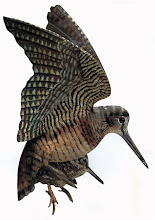
In 2007, we used two kinds of PTTs: one PTT-100 9.5 gram Solar PTT, duty cycle 48/10 and transmission interval of 60 seconds (Astur); and the other one with duty cycle 48/10 and transmission interval of 45 seconds (Navarre).
Astur travelled around 4,660 km.
Navarre travelled around 3,890 km.
Here some results:
a) Very few emissions up to Russia
b) Astur went up to the Ural Mountains
c) Navarre was nesting during some days
d) Inside Russia Navarre’s PTT (transmission interval of 45 seconds) gave better emissions than Astur’s PTT (transmission interval of 60 seconds)
e) The PTT we used in 2006, 12 gram solar PTT, duty cycle 48/10, gave much better emissions, in quality and quantity
f) Inside Russia, the PTT we used in 2006 gave more regular emissions than the new ones, the frequency of the emissions was much better
g) The charge of the PTTs is the key point, not only against interferences but also to give better emissions
h) So, in new projects the PTTs would have to charge more
i) The problem of the interferences is really serious, hard and deep
We were able to determine the location accuracy of some class A and B locations
[1].First time that we think about the possibility of going up to the Ural Mountains and release there a couple of woodcocks, one at each side of the mountains to track them.
Information in Basque:
http://mugarikgabekoscolopaxrusticola.blogspot.com/
[1] See Location accuracy of emissions gathered via satellite:
http://www.euskonews.com/0484zbk/gaia48404en.html.
